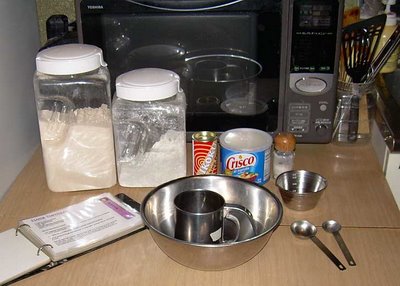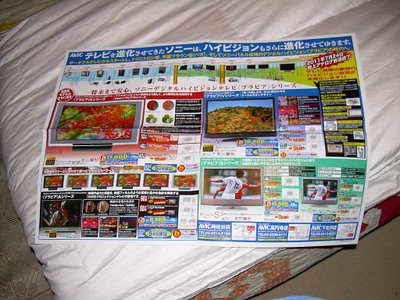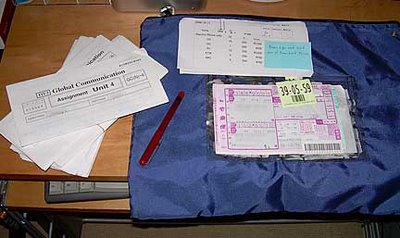 Mmmm. Cheap video card. Tasty.
Mmmm. Cheap video card. Tasty.In some ways, I'm a typical female with stereotypical interests and habits. I like to cook and I sort of enjoy housework most of the time. I also love having long hair despite the trouble it is to take care of and won't sacrifice it to age as many women do. In other ways, I'm not very girly at all. I don't like clothes or jewelry and I don't shop recreationally.
One of the ways in which I'm not a typical female is that I'm not intimidated by cracking open a computer case and tinkering with the insides. I'm also not much bothered by messing around with the software though I often find that a more frustrating experience. When my PC started to show its age to the extent that there things it was too old and doddering to accomplish, I didn't hesitate to perform a little internal surgery to boost its sagging capability.
I'd been wanting for some time to get into a new multiplayer game and my sister and an old friend of mine from my days of playing
Diablo II on
Blizzard's Battle.net talked about it and decided to try out
Guild Wars. Guild Wars isn't a new game so it doesn't expect too much from a machine but my computer's integrated video wasn't going to cut it.
My sister helped me locate a video card which would work with the game and my aging eMachine and helped me buy it. One annoying fact is that most computer-related hardware and all software cannot be exported from the U.S. to Japan. I'm sure this is to protect the Japanese market for such items but it's a pain because I want English software to go with my hardware and the prices are much higher in Japan for comparable items. In the case of the video card I bought, it was only $71 in the U.S. and the cheapest card (with only 64 MB of RAM) on Amazon Japan was around $90. So, I had to have it shipped to my sister then she shipped it to me. That's why the box in the top picture is a bit beat up.
The card I bought is an nVidia GeForce 5200 FX with 256 MB DDR. It's a PCI card which I chose largely because I'm familiar with them and would know what to do with it. The PC users in my life told me it's more common to install an AGP card for video on PCs but I had no idea what that was and didn't want to horse around with anything new. It didn't hurt that this card was available at a good price and has dual-video support and S-video (attributes which my integrated video chip does not have).
Please note that you can see much larger and more detailed pictures if you click on the ones featured in this post. Some of the later shots require a closer look to see what I'm talking about.
 Two screws to remove and you're in.
Two screws to remove and you're in.I've tinkered with the insides of my PC twice before (once to install RAM and once to install a Firewire card) so getting into it wasn't anything new. It's pretty nicely designed such that you unscrew two screws from the back and slide off the side panel to access the interior. I'm very paranoid about being in the guts of the PC when it comes to static so I touch the power casing any time I stand up and walk across the carpeted floor in between varous procedures as well as at the outset of the operation.

Unfortunately, I also have enough experience to know what to expect inside of a PC that hasn't been touched for awhile. It was full of copious amounts of dust. If nothing else, installing an upgrade to it once in awhile gives me a reason to dig out the compressed air and blow it all out.
 Yuck.
Yuck.I decided to hold the computer on the edge of the sink and blow the dust into it. It was a huge amount of dust that completely coated the bottom and clogged up the sink trap when I hosed it all out. It also blew all over areas around the side so I'll have a bit of clean up to do.
 My card's future home.
My card's future home.After that housekeeping, I had to remove the bracket from the slot . These brackets are there to keep even more dust from getting into the back of the computer through an empty, gaping hole which would be there if no expansion card was installed. You can't actually see the PCI slot because it's covered by the Firewire card that's already there. However, in the smaller red rectangle above, I've pointed out another (filled) slot.
My PC has 3 PCI slots and I'm not sure what is in the top one. It looks like two ethernet jacks but it could be two telephone connection areas. That wouldn't make sense since both a LAN and phone jack are elsewhere on the back. The card was there when I bought the PC and there's a sticker next to the two jacks which shows a Canadian flag so it might have to do with something special when using a computer in Canada. Regardless, if I ever need that 3rd slot, I'm giving that card the heave-ho as I've never used those jacks.
 You've got a date with the trashcan.
You've got a date with the trashcan.Once the bracket is removed, you don't really need to save it because it's unlikely that one will remove a card and need to cover the hole. However, it's important to save the screw since it will be screwed into the same spot once the card is installed.

Here's the card itself. It has a pretty large heat sink and no power connector. Another reason that I liked this card was that I didn't want to mess around trying to figure out where to move wires around. I'm pretty sure an AGP card would have required me to connect some juice to it but what do I know?
 Our new friend Mr. Video Card has joined our old friend, Mr. Firewire Card.
Our new friend Mr. Video Card has joined our old friend, Mr. Firewire Card.The card goes into the slot easily though I had to put the PC on its side to push it firmly in. With all its little jutting doodads, it puts the other cards to shame in terms of having a look of intimidating complexity.
I knew that the physical installation was going to be the easy part. Once I slid the side panel back on, put the screws in and re-attached the nest of snakes to the back, the potentially hairy part began. While Macs and PCs are pretty similar when tinkering with their guts, they aren't quite the same when dealing with driver software and configuring things. The PC is always trickier because there are still arcane ways of dealing with things and I was a bit rusty on a few points. I was hoping I wouldn't have to dust off my knowledge and put it to work.
I booted up the computer and all looked okay at first glance though the resolution had swapped to 600 X 800. Since the monitor was now hooked up to the PCI card, I figured this was the best XP's default driver could do so I loaded up the nVidia drivers and restarted. At this point, the Windows logo came up followed by the eMachine's logo then a terminal black screen. I knew that I'd probably have to disable the old video card driver as a first troubleshooting step if this happened.
The problem was that I couldn't quite remember which Fkey to press to start Windows in 'Safe Mode' or to make various hardware choices on start-up. After fumbling about a bit, I managed to mess things up enough that Windows offered me the option to start in Safe Mode and from there I stumbled around and disabled the old video driver. Upon restart, all was right with the world again.
 Shortly after this screenshot, I got my sister's character killed. Sorry, Sharon!
Shortly after this screenshot, I got my sister's character killed. Sorry, Sharon!As the first test, I ran Guild Wars (screenshot above) and it looked pretty snazzy. Unfortunately, having no clue what I was doing, I ran close enough to some enemies that they set me on fire and I died. Hopefully, when I start to play in earnest, my sister will save me from myself in this regard.
I've already noticed other improvements since installing the card. Photoshop redraw is much faster. I'm guessing that video playback will also look spiffier. I haven't figured out how to get the S-video out working yet but I'm hoping to get that rolling soon as well so I can compare it to using the Mac Mini for video watching on television. All in all, it was well worth the $70.


 Mix the dry ingredients in a bowl. Add the vegetable shortening. Use a fork or pastry cutter to cut in the shortening or just mix it with your hands until it resembles coarse bread crumbs. Add warm water a little at a time until the dough is soft and not sticky.
Mix the dry ingredients in a bowl. Add the vegetable shortening. Use a fork or pastry cutter to cut in the shortening or just mix it with your hands until it resembles coarse bread crumbs. Add warm water a little at a time until the dough is soft and not sticky.



























